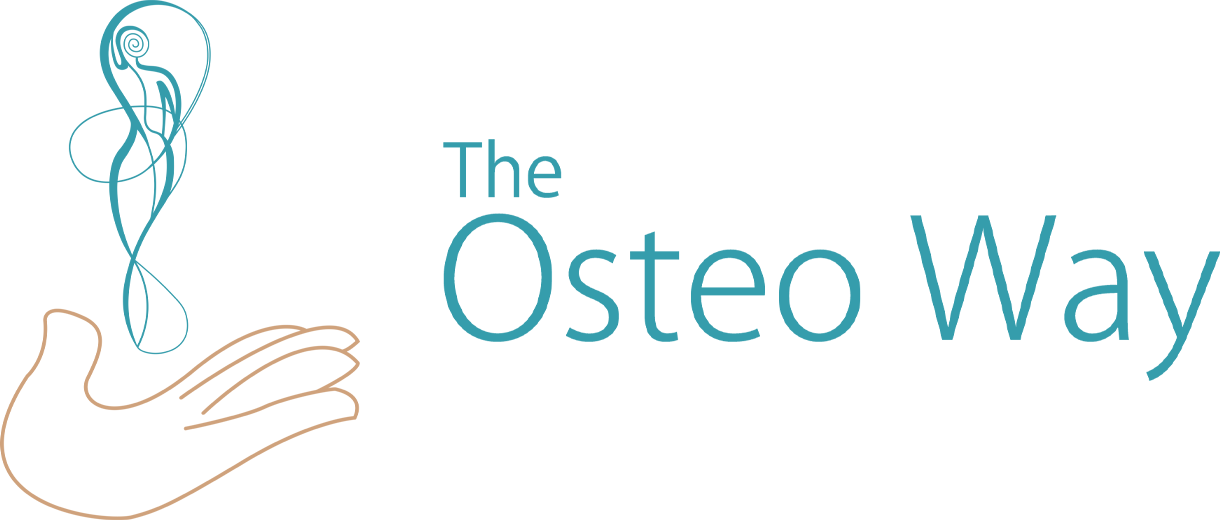Did you know that babies have soft skulls when they’re born? As infants develop, a vast amount of bones fuse together which means that infants are actually born with more bones than adults. In today’s article Chloé Sardin will explain a condition called Plagiocephaly, which often presents in infants with a head shape that is visibly flat or asymmetrical. Chloé will outline some steps that you can take as a parent to encourage proper fusion of the skeletal muscles as your baby develops, and some treatment approaches that can help children who have plagiocephaly.
Did you know that newborns have more bones than their parents? At birth, babies have 300 bones, whereas adults only have 206. Don’t worry–bones don’t just disappear: they fuse with other ones, lowering the number we have thanks to soft parts that are cartilaginous. The baby’s head is quite different from the adult skull, as it has soft parts called fontanelle, and joints called sutures that are not closed yet. The purpose of those is to allow the growth and development of the skull (the head has to fit in the womb and come out of its mother at some point!), gradually calcifying. It’s all quite fascinating how well done and resilient this system is.
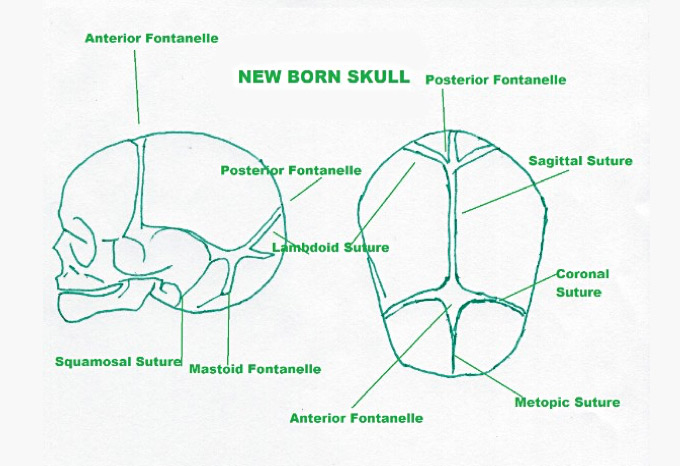
One thing that parents can sometimes notice is that their baby’s head is flatter on one side (or on the back of the head) or that their baby always looks to one side.
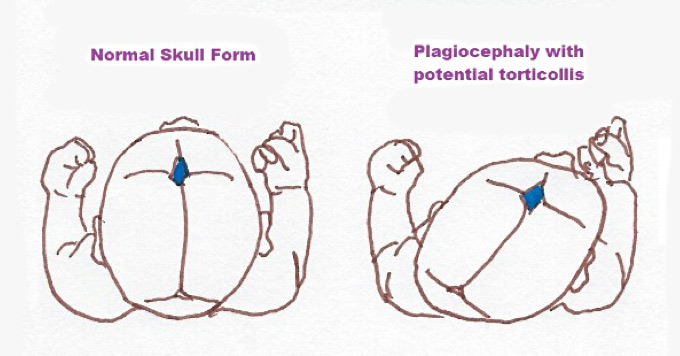
The first one might have a plagiocephaly (or brachycephaly), and the second one, a torticollis.
There are two types of plagiocephaly:
- Positional plagiocephaly: is the most common. It is related to the flattening of one side of the occipital bone, usually associated with one ear, and the forehead (frontal bone) being more forward on that same side. The face will also be asymmetrical with one eye looking bigger or more open than the other.
- Synostotic plagiocephaly: is caused by a premature fusion (calcification) of the cranial bones, and requires medical attention.
- Brachycephaly: is a flattening of the whole back of the head (occipital bone).
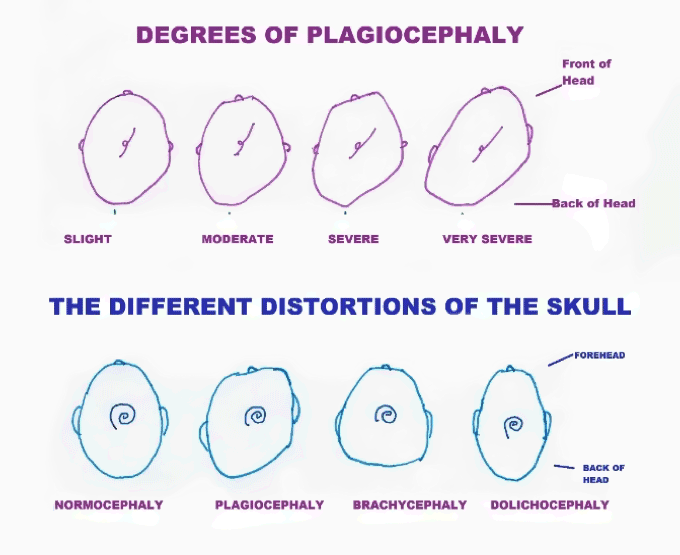
There are many potential causes for plagiocephaly:
- During pregnancy: a low amniotic fluid, a premature engagement of the head in the pelvis, or twin pregnancies (due to lack of space)
- During the delivery: long delivery, use of forceps or vacuum, or a poor presentation
- Torticollis: the baby’s head being so heavy yet malleable if it only turns their head one way it will put pressure on one side of the head, creating a flat spot on the side they look towards
- Laying down on their back: before three months, babies sleep most of the day on their back and resting on the back of their head, causing plagiocephaly to occur more so than at a later age when they are more mobile
- And many more!
Physiotherapists often help babies with torticollis, and doctors, midwifes and nurses warn patients when they start to see a flat spot. This allows babies to be taken care as soon as possible by a team of health practitioners as the earlier it is treated, the better the outcome.
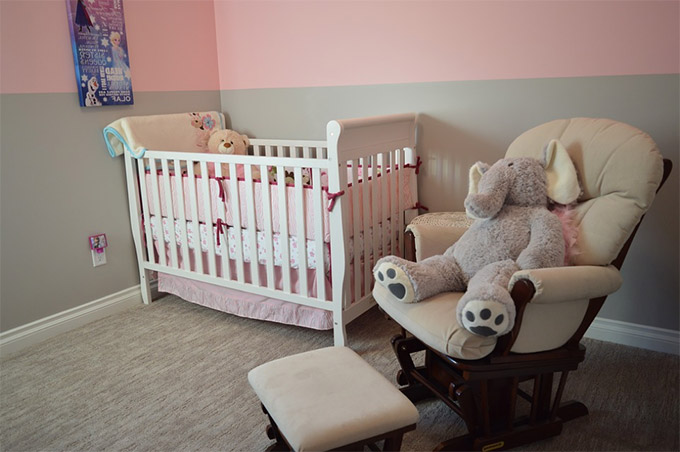
At home, you can:
- Put your baby on his tummy as much as possible during the day under supervision
- Minimize laying your baby on his back: maybe try having him in a carrier on you? Put him on his side when you are around.
- Stimulate the side he doesn’t want to look towards by entertaining him on that side, move the crib, feed on both sides, or carry him on both sides.
- Talk to your physiotherapist about exercises or stretches.
At birth, all skulls are asymmetrical, but they should become more even through growth and development. Sometimes, though, the process requires a little help along the way!
If you think your little guy or girl may need some help with this, you might consider booking an Osteopathic appointment with me here, or by calling 403-910-1133.
